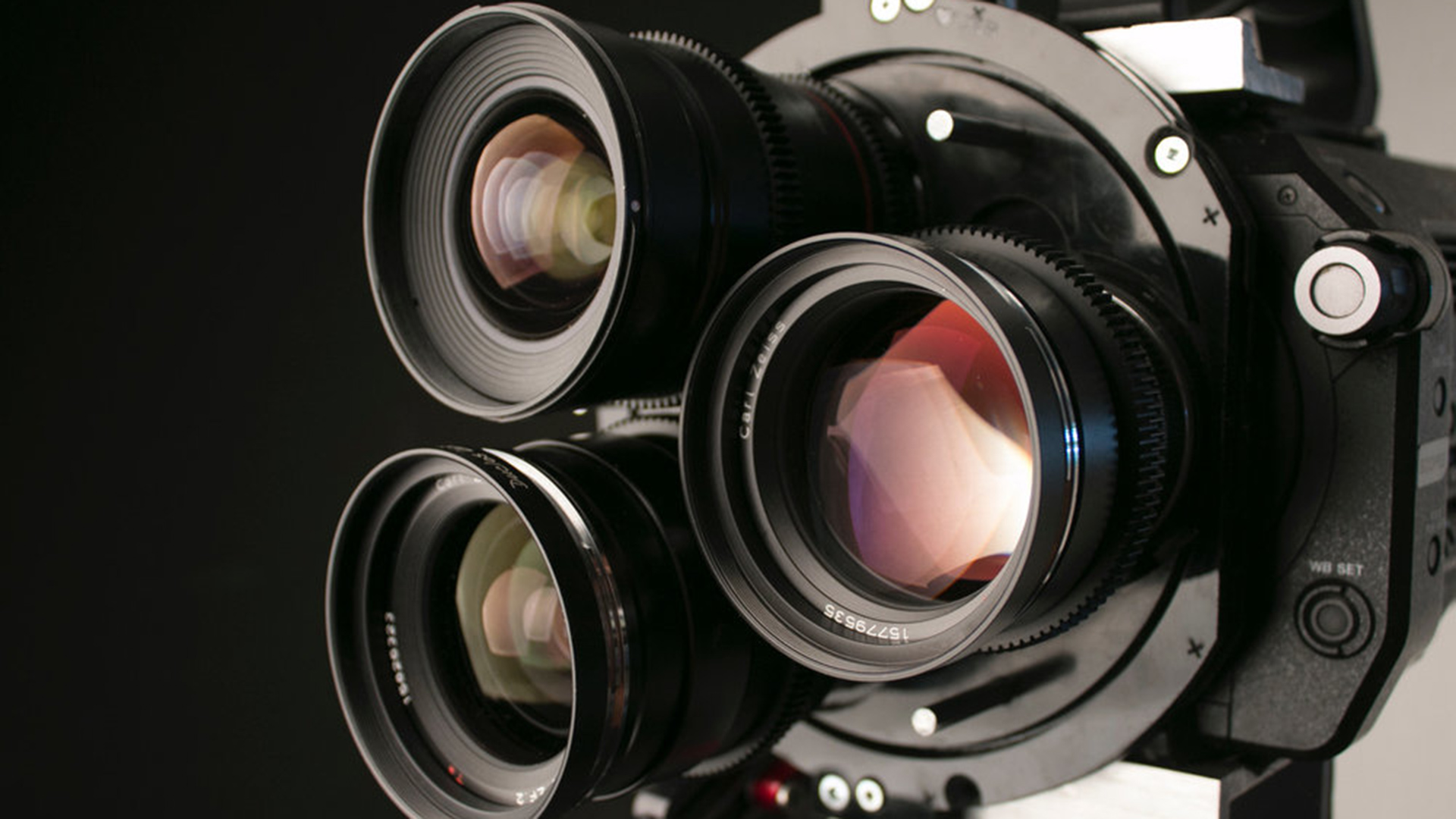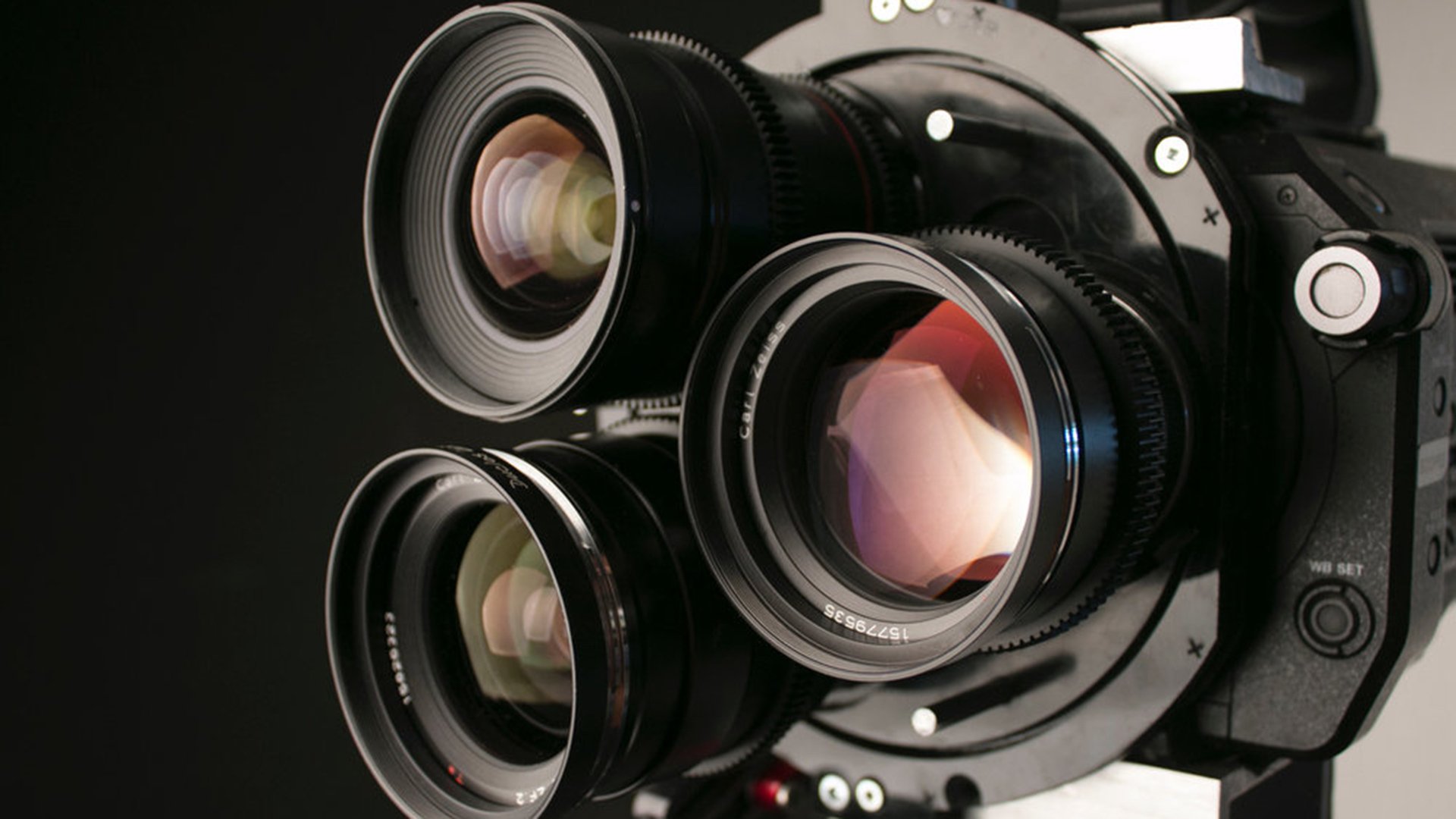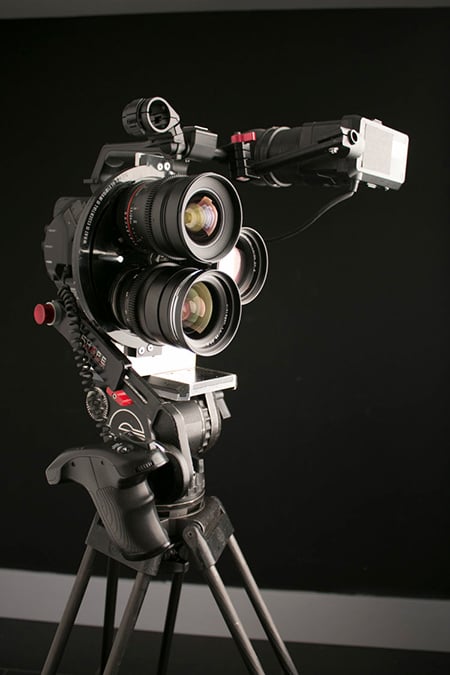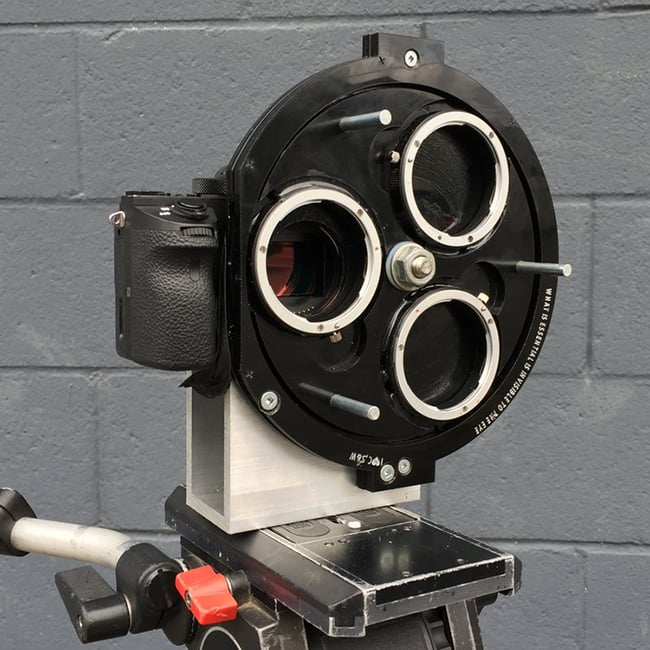

It might look like a hark back to the past, and it started as a joke, but the Multi Turret is in fact a serious and potentially very useful accessory!
The Multi Turret is the brainchild of DP Ian Kerr, CSC, who started his career in documentary using Betacams. Such cameras were usually equipped with a zoom lens that could go from wide to long telephoto without the need to change glass, which made them very versatile indeed, and ideally suited to on the fly filming.
Fast forward to today where large sensor cameras rule, and usefully wide ranging video specific zoom lenses are difficult to come by without needing to take out another mortgage, or breaking your back.
This is a big, big problem. Large chip cameras produce a wonderful image, and it would be great to use them on a verite style documentary, but this is often stymied by the need to constantly change lenses. In documentary this equates, unfortunately, to missing the shot entirely. This lead to Ian going as far as taking two cameras to a shoot. One with a wider angle lens, and one with a telephoto. Clearly not the most ideal of situations!
Enter the Multi Turret
Ian decided to do the thing that is the source of many a good idea. He looked to the past, and came up with the Multi Turret.
When you first look at the Multi Turret it can elicit a wry chuckle. It does after all make your modern camera look like something from a Pathe News reel. Look beyond that however, and you can see how this could well be the solution to fly on the wall documentary making with a S35 chip camera that users have been crying out for.

The Multi Turret may well look like a hark to the past, but it solves very similar problems to those that the original lens turrets sought to fix
The turret can hold three prime lenses or lightweight zooms. By attaching three of the most commonly used prime lenses you could pretty much cover every focal length you need while using the fastest glass possible.
Another advantage that the inventor mentions is that because you can fit three compact primes to it, despite the fact it is carrying three lenses, it is still lightweight, and makes the camera more compact than using a lengthy zoom, so you can fit more easily into confined spaces, such as a car.
Another big advantage is mixing lenses. You can, for example, mount an EF lens, a PL lens, and an F mount lens all on the same turret and effortlessly switch between them. Furthermore you can customise your lens selection to what you are aiming to do. For example the company says that if you know you are working with wildlife you could fit a selection of long primes, or a selection of wide lenses. You could even attach a tilt shift lens to one of the mounts.

Anything else? Well, it is claimed that full electronic communication with EF lenses on the Sony FS7 and A7 series is up and fully working, with tests with the VENICE forthcoming.
Currently the prototype system works with Sony Alpha mount cameras, although support for Arri and RED are being worked on.
One more thing. The company behind it is also looking into the ability to add optical filters and auxiliary optics between the lens and camera body. This would make the device quadruply useful because this can mean only one thing. ND filters.
We'll be keeping a close eye on this one. Find out more on the Multi Turret website.
Update: I'm told by Ian that an EF version of the turret is not possible due to the flange back distance, but that in the future a Canon RF mount should be possible. I would imagine this to be the case for the Nikon Z Mount as well.
Tags: Production


Comments